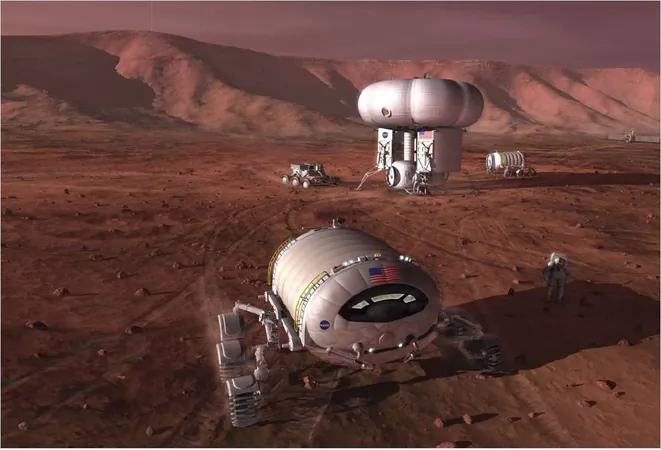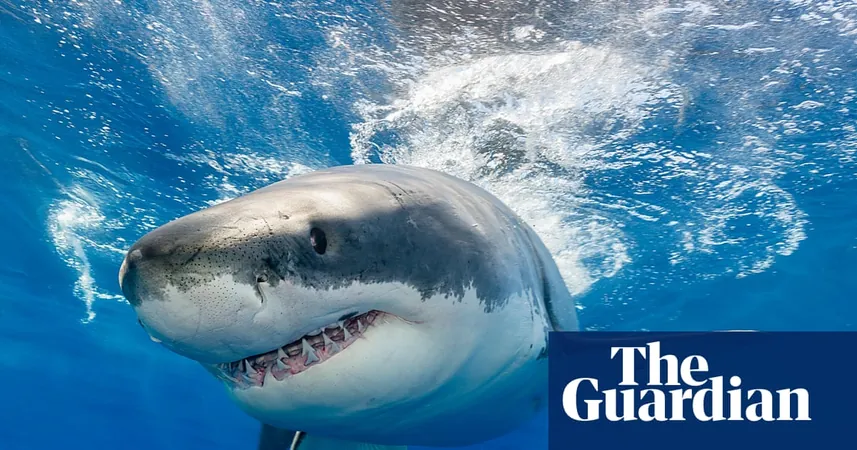
Revolutionary Magnet Technology: A Game-Changer for Astronauts Exploring the Moon and Mars!
2025-09-02
Author: Wei
Innovative Solutions for Deep Space Exploration
In an exciting breakthrough for space exploration, scientists have unveiled a game-changing method to efficiently produce oxygen for astronauts embarking on missions to the moon and Mars. Traditional systems onboard the International Space Station (ISS) have relied on cumbersome centrifuges to split water into oxygen and hydrogen through a process called electrolysis. However, in microgravity, separating these gas bubbles becomes a challenge as they need mechanical spinning, making the current technology heavy and energy-draining.
Harnessing the Power of Magnets
A groundbreaking study led by Alvaro Romero-Calvo at the Georgia Institute of Technology, in collaboration with researchers from the University of Bremen and the University of Warwick, has introduced a simpler, lighter, and more sustainable alternative: magnets! Their research, published this month in Nature Chemistry, reveals that magnetic forces can maneuver gas bubbles in microgravity, effectively eliminating the need for the bulky centrifuges.
A Milestone Discovery in Space Technology
Romero-Calvo highlighted the potential of two largely unexplored magnetic interactions—diamagnetism and magnetohydrodynamics—as promising pathways to revolutionize oxygen production in space. The research team conducted tests using ZARM’s impressive 479-foot tall drop tower in Bremen, Germany, achieving a staggering 240% improvement in bubble detachment efficiency. This leap in efficiency could lead to significantly enhanced electrolysis cells, making oxygen generation onboard spacecraft far more effective.
A Vision for the Future of Space Missions
“After four years of dedicated research, demonstrating that magnetic forces can manage electrochemical bubbly flows in microgravity is a thrilling advancement toward more resilient spacecraft life support systems,” expressed Romero-Calvo.
From Thesis to Reality: The NASA Connection
This innovative concept originated from Romero-Calvo's doctoral thesis and gained traction with backing from NASA’s Innovative Advanced Concepts (NIAC) program. As we set our sights on ambitious explorations of the moon and Mars, this magnetic technology could be the key to ensuring astronauts have the oxygen they need for long-duration stays in the cosmos.




 Brasil (PT)
Brasil (PT)
 Canada (EN)
Canada (EN)
 Chile (ES)
Chile (ES)
 Česko (CS)
Česko (CS)
 대한민국 (KO)
대한민국 (KO)
 España (ES)
España (ES)
 France (FR)
France (FR)
 Hong Kong (EN)
Hong Kong (EN)
 Italia (IT)
Italia (IT)
 日本 (JA)
日本 (JA)
 Magyarország (HU)
Magyarország (HU)
 Norge (NO)
Norge (NO)
 Polska (PL)
Polska (PL)
 Schweiz (DE)
Schweiz (DE)
 Singapore (EN)
Singapore (EN)
 Sverige (SV)
Sverige (SV)
 Suomi (FI)
Suomi (FI)
 Türkiye (TR)
Türkiye (TR)
 الإمارات العربية المتحدة (AR)
الإمارات العربية المتحدة (AR)